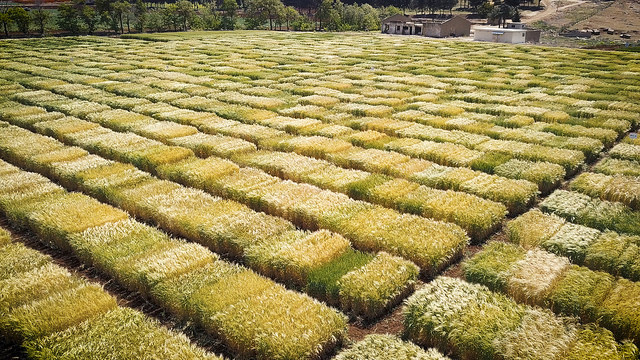
Regenerating wild crop relatives in the Fertile Crescent
ICARDA is regenerating massive amounts of crop wild relatives in their place of origin – the Fertile Crescent.
Ahmed Amri selected a spike from a collection he held in his hand. “This one is what we think is the progenitor of wheat. It’s Aegilops speltoides,” Ahmed, the head of the Genetic Resources Section of the International Center for Agricultural Research in the Dry Areas (ICARDA) then held up another spike. “And it crossed with this one: Triticum uratu.” Ahmed continued to place wheat spikes in a line on the ground and mapped out the evolution of durum and bread wheat over the millennia.
On the ground lay an amazing collection of wheat genetic diversity … all freshly picked from the regeneration plots of ICARDA at its Terbol station in Lebanon. It was as if time had been turned back, and the evolution of wheat had been repeated all over again, right here in its center of origin.
The area is not only the center of diversity of wheat. The wild progenitors of emmer wheat, einkorn, barley, flax, chickpea, pea, lentil, and bitter vetch are all still found in the so-called “Fertile Crescent”, which forms an arc from the Nile delta to the head of the Arabian Gulf. It was here that the first crops were domesticated more than 10,000 years ago.
It’s no coincidence that ICARDA’s Terbol station is located right in the middle of an area known as one of the very few original homes of agriculture around the world.
Read the full article by Michael Major | via ICARDA.
[Photo by ICARDA | Flickr]







